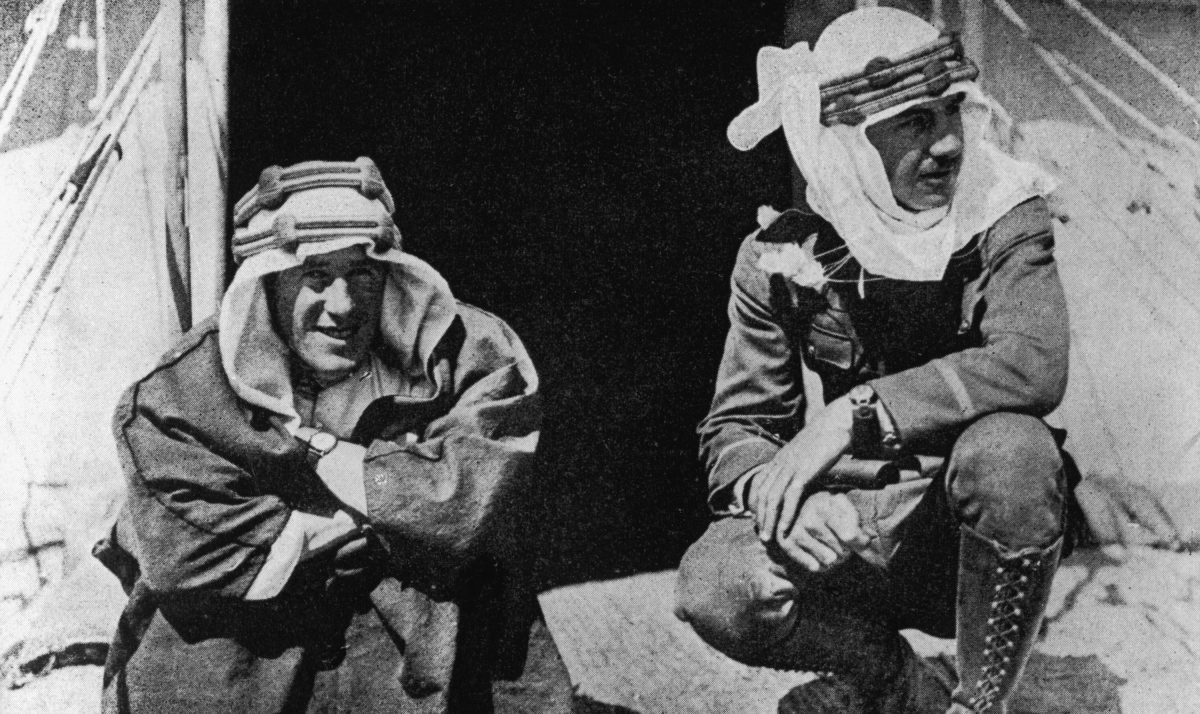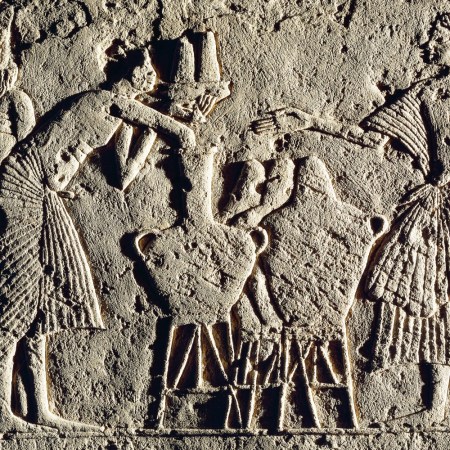“The [British] Cabinet raised the Arabs to fight for us by definite promises of self-government afterwards…. It was evident from the beginning that if we won the war these promises would be dead paper, and had I been an honest adviser of the Arabs I would have advised them to go home and not risk their lives fighting for such stuff.”
-T.E. Lawrence, Seven Pillars of Wisdom, 1926
Independence isn’t easy. The United States handled it better than most and our first hundred years still included Britain burning the White House and a Civil War.
Quite simply, Thomas Edward Lawrence could not have ensured the Middle East avoided chaos and bloodshed altogether.
But his insights might have prevented a significant amount of it.
More than a century after he offered his grand vision for the region, this is what Lawrence of Arabia recognized, why it was disregarded, and how it still matters today.
The Middle East in 1914
As had been the case for the previous 400 years or so, the major player in much of the region was the Ottoman Empire, which at the time controlled Palestine, Syria, Mesopotamia and a significant portion of the Arabian Peninsula. Yet the Empire no longer stretched into Egypt—much territory had already been lost. By joining Germany and Austria-Hungary in World War I, it was ensured the “sick man of Europe” would soon be taken off life support. (The Ottoman Empire officially ceased to be in 1922.)
Yet it still seemed unthinkable that the Arabs could seriously challenge them militarily. And no one could have predicted that one of the key figures in the Arab success would be a tiny, fearless Brit.
“Dropped One Form and Not Taken On the Other”
Born on August 16, 1888 in Wales, Thomas Edward Lawrence’s life began with a lie. His father, Sir Thomas Chapman, had years earlier fallen in love with the governess hired to take care of his daughters. Together, Sir Thomas and Sarah Junner abandoned his family, renamed themselves the Lawrences and moved from Ireland to Great Britain. T.E. did not learn any of this until after his father’s death in 1919. (Soon after, he started his own name changes—he began going by “John Hume Ross” in 1922.) In general, he had an unsettled youth as his parents spent years traveling—incredibly, they had five sons together and each was born in a different country. (His mother outlived both her husband and famous offspring, dying as a missionary in China in 1959.)
1963 Best Picture winner Lawrence of Arabia understandably shapes our vision of Lawrence today.
The film erred in a very basic way, however, by making Lawrence a literally towering figure. Peter O’Toole was 6’2”, but at a time the average man stood 5’9”, Lawrence was only 5’5″. (Mumps may have stunted his height.) As if to compensate, Lawrence displayed an outsized physical courage both at war and in civilian life. In particular, he adored speed, which led to his death at 46 after he crashed his motorcycle in 1935. (Lawrence collected bikes guaranteed to exceed 100 miles per hour.)
When World War I began, Lawrence was just 25. The Oxford grad, who had spent years working on an excavation in Syria, was assigned to the British Army in Cairo. In 1916, he became a liaison officer to the Great Arab revolt and was assigned to Prince Faisal. Lawrence embraced the Arab cause, yet recognized in some ways he would never fully connect. He later wrote:
“In my case, the efforts for these years to live in the dress of Arabs, and to imitate their mental foundation, quitted me of my English self, and let me look at the West and its conventions with new eyes: they destroyed it all for me. At the same time I could not sincerely take on the Arab skin: it was an affectation only…I had dropped one form and not taken on the other…”
Lawrence still made significant contributions to the Arabs’ highly effective guerrilla warfare campaign. Take the destruction of the Hejaz Railway, intended to connect the Ottoman Empire by linking Constantinople to Medina on the Arabian Peninsula 1,800 miles away. As Scott Anderson (author of Lawrence in Arabia) wrote in Smithsonian Magazine, “By his count, Lawrence personally blew up 79 bridges along the railway, becoming so adept that he perfected a technique of leaving a bridge ‘scientifically shattered’—ruined but still standing. Turkish crews then faced the time-consuming task of dismantling the wreckage before repairs could begin.”
The triumphs became more and more audacious, notably when they rode hundreds of miles across the desert to attack the port of Aqaba from land instead of sea. (Lawrence elected to keep the mission secret from Britain, only notifying them after the victory.)
Ultimately, the Allies, including Britain, France and the United States, defeated the Axis Powers. And this is when decades of future tensions were formalized.
Winning the War and Losing the Peace
As an incentive to fight, the Arabs had been promised self-government. Lawrence knew, however, that Britain and France had no intention of honoring this vow. He managed to convince himself that somehow things would still work out:
“I salved myself with the hope that, by leading these Arabs madly in the final victory I would establish them, with arms in their hands, in a position so assured (if not dominant) that expediency would counsel to the Great Powers a fair settlement of their claims.”
Lawrence himself presented a proposed map of the Middle East to the British cabinet. Deborah Amos noted on NPR’s All Things Considered that Lawrence “strove to recognize tribal patterns and commercial routes” and tried to take “into account local Arab sensibilities rather than the European colonial considerations that were dominant at the time.”
Ultimately, the British chose a different, particularly colonial method of mapmaking: one literally drawn with a ruler.
Straight Lines for a Crooked World
In 1916, Sir Mark Sykes, operating on Britain’s behalf, and Francois Georges-Picot, France’s representative, drew a new map for the region. Syria and Lebanon would fall under French influence, while Britain took much of Iraq and Palestine.
This was, to put it generously, shortsighted. The Arabs felt betrayed and were understandably embittered. Soon enough Britain and France saw their spheres of influences slip away.
Beyond this, the new national borders ensured future tensions and outright violence, as can be seen by examining the northern region of a place that has received a great deal of American attention in recent decades.
“F—-d Over in a Major Way”
A writer and editor for publications including LIFE and Epicurious, Michael Y. Park traveled throughout Kurdistan in 2012. (His brother had previously served near the region with the U.S. Army Corps of Engineers.) If you look at a map you won’t see Kurdistan—which lies in northern Iraq and the surrounding region—but you’ll certainly hear about it if you go there.
“People would talk about Kurdistan as opposed to Iraqi Kurdistan or Turkish Kurdistan or Syrian Kurdistan,” Park told RCL. “They talk about Kurdistan as one region.”
Much of Kurdistan is located in Iraq. The people are Kurds, but also Iraqi. How did they view that relationship?
“There was no relationship between Kurdistan and Iraq,” Park said simply.
Military force had kept the Kurdish region a part of Iraq. One of the places Park visited was Halabja, site of a chemical attack by Saddam Hussein on the Kurds: “There’s a big memorial to the victims.” On March 16, 1988, bombs containing mustard gas were dropped, killing as many as 5,000 civilians.
Saddam remained unrepentant to the end. On trial in 2006 for this and other genocidal crimes that killed as many as 180,000 Kurds, he declared: “My message to the Iraqi people is that they should not suffer from the guilt that they killed Kurds.”
The Kurds suffered thousands of deaths in the most depraved manner possible, in large part because two white, European men jammed them into a country with which they otherwise had no real connection. Park summed it up bluntly: “The Brits f—-d everyone over there in a major way.”
These particular atrocities didn’t have to be—Lawrence’s map had called for the Kurds getting their own homeland back in 1918.
Understandably, Lawrence’s reputation among the Arabs suffered when it became clear that his British compatriots wouldn’t keep their promises. Anderson wrote in Smithsonian that Sheik al-Atoun—a modern tribal leader in Jordan whose grandfather had fought alongside Lawrence—saw Lawrence as a man who ultimately served the British interest: “May I speak frankly? Maybe some of the very old ones still believe he was a friend of the Arabs, but almost everyone else, we know the truth. Even my grandfather, before he died, he believed he had been tricked.”
“A Very Strange Fellow”
The remainder of Lawrence’s life was less glorious but equally surprising. He lived a good chunk of it under assumed names and enlisted in the Royal Air Force, the Tank Corps and the RAF again.
His memoir, The Seven Pillars of Wisdom, recounted being captured (“There were too many witnesses for fight or flight, so I went readily”), tortured (“As the punishment proceeded the whip fell more and more upon existing weals, biting blacker or more wet”), possibly raped (“The Bey cursed me with horrible threats: and made the man holding me tear my clothes away, bit by bit”) and unquestionably traumatized (“At last when I was completely broken they seemed satisfied”).
Or did it even happen at all? Scholars have long debated whether Lawrence fabricated this attack.
While often seeking an anonymous life—albeit it a dangerous one filled with racing motorcycles at top speed—Lawrence started some high-profile friendships. These included two with men who’d win a Nobel Prize for Literature: Winston Churchill, who employed Lawrence as an advisor on Arab affairs and would go on to achieve immortality for his leadership during World War II, and George Bernard Shaw, the celebrated playwright who won an Oscar for the film adaptation of his play Pygmalion, a work which inspired the musical My Fair Lady.
Upon Lawrence’s 1935 death, Churchill mourned the loss of everything he believed T.E. still had to offer the world: “For all his reiterated renunciations I always felt that he was a man who held himself ready for a new call. While Lawrence lived, one always felt—I certainly felt it strongly—that some overpowering need would draw him from the modest path he chose to tread and set him once again in full action at the center of memorable events.”
While Shaw was also a devoted friend, he was known to describe Lawrence in terms that were less flattering. Recognizing Lawrence’s endless capacity to reinvent himself in unexpected ways—Lawrence actually used the assumed name Thomas Edward Shaw until his death—Shaw called him “a very strange fellow, a born actor and up to all sorts of tricks.”
Both descriptions were accurate. Lawrence himself observed: “All men dream, but not equally.” Lawrence’s unique collection of experiences and characteristics had given him an insight and ambition basically unmatched among Westerners looking at the Middle East. It was the world’s misfortune he failed to find more fellow “dreamers of the day” who “act on their dreams with open eyes, to make them possible.”
Messes of the Modern Middle East
Of course, the Kurdistan complications are hardly the only flashpoint in the Middle East. For those not keeping track, current ones include but are by no means limited to:
-Syria’s civil war, which has lasted for seven years and killed hundreds of thousands—it’s nearly impossible even to estimate an accurate casualty count.
-The war in Yemen, which shows no sign of ending, has killed at least 10,000 (potentially 50,000), and has the potential to be the worst human rights catastrophe since World War II.
-Saudi Arabia and the United Arab Emirates reportedly nearly invaded Qatar.
-Iraq continues to suffer violence for a variety of reasons, particularly the tensions between the Sunnis and Shiites. There is some optimism over the recent election of a new president (Barham Salih) and his appointment of a new prime minister (Adel Abdul Mahdi). Yet the basic question remains: How do you unite a nation this deeply fragmented?
Oh, and relations between Israelis and Palestinians—volatile in the best of times—have by all accounts deteriorated.
If you want a better understanding of why writer Michael Y. Park believes that many Kurds consider the horrors of Halabja to be “key to their identity,” watch the video below to discover how it still impacts survivors three decades later.
This article appeared in an InsideHook newsletter. Sign up for free to get more on travel, wellness, style, drinking, and culture.
























